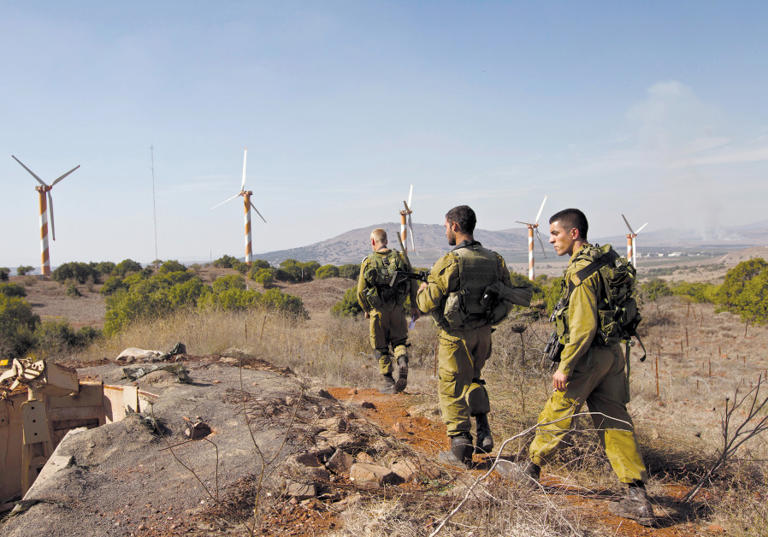Veterans Affairs Canada has been overestimating the number of veterans for decades
Peter Zimonjic, Murray Brewster, Philip Ling - CBC
Veterans Affairs Canada has been overestimating the number of Canadian veterans for decades — and newly released census numbers suggest there may be 25 per cent fewer veterans than the federal government previously thought.

Veterans Affairs Canada says that it will rethink how it counts Canada's veterans after newly released census data reveal the department may have been overestimating its numbers for decades.© Frank Gunn/The Canadian Press
Statistics Canada and Veterans Affairs Canada (VAC) are scrambling to reconcile the difference between their numbers, CBC News has learned.
According to the 2021 census, there are 461,240 veterans in Canada — a huge decline from the 617,800 former military members projected by VAC.
The explanation may lie in the way that VAC and Statistics Canada count veterans.
The most recent census contained a question about military service for the first time in 50 years. It asked respondents who were 17 years of age or older on May 11, 2021 whether they had ever served in the Canadian military.
VAC, on the other hand, arrives at its annual projection of the veteran population by using a mathematical model based on 1971 census data, the 1988 labour force survey and annual survival rates from Statistics Canada.
"This has caused VAC and Statistics Canada to re-evaluate the estimates we have been using for the past decades for the estimated veteran population," VAC spokesperson Josh Bueckert said in an email.
Other factors could be interfering with efforts to come up with an accurate picture of the veterans population.
Related video: Veterans dismayed over Canada’s refusal to award Victoria Cross
One of those factors is the incomplete picture provided by the 1951, 1961 and 1971 censuses upon which VAC partially bases its estimates. Previously, said Statistics Canada, the census only asked men aged 35 and older whether they served in the Canadian military or in other allied forces.
The 2021 census short form survey, which was sent out to all households, broadened its question to include anyone 17 and older regardless of gender. It asked them whether they served or are currently serving in the military.
Statistics Canada said a person could define themselves as someone who served in the Canadian military if they served with "the Regular Force or Primary Reserve Force as an Officer or Non‑Commissioned Member."
VAC rethinking the way it counts veterans
VAC's estimates were based on their definition of a veteran, which is anyone who completed basic training and was honourably discharged from the forces.
The census is also based on self-reporting. A VAC spokesperson said that approach also could provide an incomplete picture because some people who technically qualify as veterans may not have self-identified as veterans.
The discrepancy does not affect funding for Veterans Affairs Canada because its funding model is not based on the number of veterans in the country, said an official in Veterans Affairs Minister Lawrence MacAulay's office. The revised numbers could, however, affect how the department plans policy going forward.
In a media statement, VAC told CBC News that it would not provide any further updates on the number of veterans until it re-evaluates the way it counts former military members.
"Our department is working with Statistics Canada on continued verification of data collected through Census 2021, with the aim of producing the most accurate and comprehensive view of the Canadian veteran population that we possibly can," the statement said.
It's not the first time Veterans Affairs has had trouble with its calculations.
An accounting error decades ago led the department to shortchange former soldiers on disability benefits over a number of years — a mistake that eventually cost the federal government more than $165 million to correct.
Veterans affairs minister stands firm on record in face of anger, call to resign
Yesterday
OTTAWA — Veterans Affairs Minister Lawrence MacAulay is standing firm in the face of anger and frustration at the Liberal government over ongoing delays, backlogs and staff shortages and a call for his resignation.

Veterans affairs minister stands firm on record in face of anger, call to resign© Provided by The Canadian Press
In an exclusive interview with The Canadian Press, MacAulay said Ottawa is making progress on a number of fronts when it comes to providing better and faster support to veterans after years of complaints and criticism.
That includes hiring hundreds of temporary staff in recent years and awarding a new $570-million contract to an outside organization for the provision of rehabilitations services to ill and injured veterans across the country.
"We have Veterans Affairs up to where it should be," MacAulay said. "And we want to continue to make sure it stays where it should be and to serve veterans in an appropriate manner."
Yet many veterans remain deeply frustrated at ongoing delays, backlogs and staff shortages at Veterans Affairs Canada, which advocates say are adding pain and stress for thousands of former service members already struggling with injuries and illness.
The rehabilitation services contract has also angered the union representing Veterans Affairs employees, which is calling for MacAulay's resignation.
MacAulay, who will represent the government during Friday's Remembrance Day ceremony in Ottawa as Prime Minister Justin Trudeau flies to an international summit in Cambodia, said he has no intention of resigning.
"My job is to do my job," he said. "And that's what I'm going to do and continue to do it."
The Liberal government has been criticized for years for not living up to its promises to ill and injured veterans. That includes its failure to bring back a lifelong disability pension awarded to those in the Second World War and Korea, but not Afghanistan.
More recently, veterans and others have complained about ongoing delays in the processing of disability claims, a longstanding shortage of case managers for those needing extra assistance and insufficient support for families and caregivers.
MacAulay has previously acknowledged that the government needs to do more to ensure veterans receive proper and timely support for illnesses and injuries sustained while in uniform, which he repeated this week.
Yet in the same breath, he cited several figures as evidence that the situation is improving. Those included a reduction in wait times for some types of disability claims and the hiring of hundreds of additional — mostly temporary — staff at Veterans Affairs.
"I hope they don't question the progress," he said. "You're fully aware that there has been some substantial progress."
MacAulay also blamed external factors for some of the department's ongoing problems, including a surge in applications for disability benefits and deep staffing cuts under Stephen Harper's Conservative government about a decade ago.
Meanwhile, he defended the contract with Partners in Canadian Veterans Rehabilitation Services, which came into effect this month despite fierce opposition and cries of alarm from the Union of Veterans Affairs Employees.
The government says the contract will help overworked case managers while ensuring veterans have access to a national network of 9,000 psychologists, physiotherapists, social workers and other help across the country.
The Liberals promised in 2015 that the average case manager would have no more than 25 veterans in their caseloads, as many struggled with 40 or more following the Conservative cuts.
The average today still sits closer to 35 when accounting for the dozens of case managers currently off on sick and stress leave, with some still having upwards of 40 or 50, according to the UVAE.
"On the contract itself, (the company) serves 14,000 veterans," MacAulay said. "They have approximately 9,000 medical experts in place across the country to provide the service they need. I don't think it would be very responsible to cancel that contract."
Yet the UVAE alleges the contract will have the opposite effect by adding another layer of bureaucracy with which veterans will have to contend while dramatically changing the role of case managers.
The union has also blasted the department's continued reliance on temporary staff to fix its problems. That issue has also been raised by auditor general Karen Hogan, who is calling for a long-term staffing and funding plan at Veterans Affairs.
The battle between the UVAE and MacAulay came to a head last month when the union wrote to Trudeau asking him to replace MacAulay because its members had lost faith in the minister.
Meanwhile, others are questioning MacAulay's clout at the cabinet table and the Liberal government's interest in veterans given their failure to fix many of the department's longstanding problems.
"Whenever MacAulay speaks, it's always the same thing: 'We think this is the highest priority, we're going to do everything we can,'" said Brian Forbes, executive director of the War Amps and head of the National Council of Veterans Associations, which represents 60 organizations.
"In our humble opinion, all of that is not enough. You've got to make systemic changes."
Asked about the resignation call and his own record, MacAulay cited several more figures about the billions of dollars spent on veterans since the Liberals came to power as well as the recent purchase of land in France to save Juno Beach from development.
"People can assess whether I'm the proper minister or not," he said. "I'm going to continue to do the job that I'm doing the best way I know how in order to make sure we serve veterans."
This report by The Canadian Press was first published Nov. 10, 2022.
Lee Berthiaume, The Canadian Press























